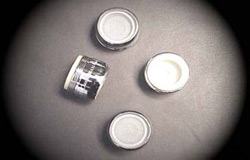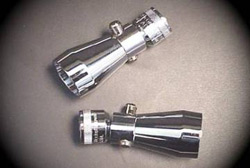Home >>> Water >> Water-saving devices
Water conservation
Water conservation quick tips:
- Verify your home is leak free - read your water meter before and after a one-hour period when no water is being used. If the meter does not read exactly the same, there is a leak somewhere.
- Repair leaky faucets and pipes.
- Check the toilet tanks - add a few drops of food coloring into the tank. If the toilet is leaking, color will appear in the water in the bowl within 30 minutes.
- Install a replacement device in the toilet tank. This will cut down on the amount of water needed per flush.
- Operate dishwasher and washing machine only when fully loaded.
- Connect a shut-off nozzle to your hose.
- Use a broom and dustpan to clean debris off the patio, sidewalk and driveway.
- Calculate how much water you use
- Become an informed citizen - report all significant water losses (broken pipes, errant sprinklers, open hydrants, etc).
Water-saving devices for your home
There are many devices that can be installed in your home to reduce the amount of water that is used. Some of them can be self-installed, others need professional installation. Toilets are one of the greatest water users in the home. Low-flow toilets use 1.6 gallons per flush and can reduce water use by 23-46%, compared to conventional models that use 3.5 to 5 gallons per flush.
Before you buy:
Madera homes were built with low-flow toilets and showerheads. If you are replacing an appliance in your home, be sure to research all available techniques and choose the right one
for your home. Visit your local home improvement store to purchase any
of the below easy-to-install devices.
DISCLAIMER NOTE: UF/IFAS WEC Extension support the use of water-saving devices in the home. However, we are not endorsing any particular, brand, company or device.


 Toilet-tank
displacement device / toilet dam
Toilet-tank
displacement device / toilet dam Faucet
aerators
Faucet
aerators Low-flow
showerheads
Low-flow
showerheads